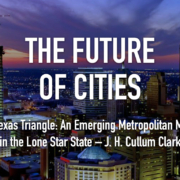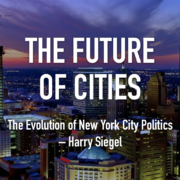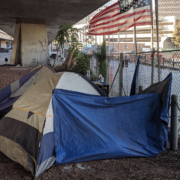How to Fix American Capitalism
One of the common mistakes I make with this blog happens when I come across a really good, important, long article that I want to discuss more in-depth than my usual bullet points, because I usually set it aside to get back to later when I have more time, and sometimes later ends up being a year and a half, as is the case this week (apologies). It’s a City Journal piece by Ed Glaeser titled “How to Fix American Capitalism – End insider privileges by renewing the freedoms to build, to work, to sell, and to learn.” His opening:
“February 2019 Harris poll found that roughly half of younger Americans would “prefer living in a socialist country.” Millennials may not fully grasp the consequences of the government owning the means of production, but they certainly don’t like how American capitalism is working for them. They have a point. Over the past 40 years, insiders have increasingly captured the American economy—from homeowners opposed to new housing construction near them to incumbent firms that benefit from the overregulation of employment to interest groups that have transformed the federal government into the equivalent of a pension system with a nuclear arsenal. The young are usually outsiders; the bill for the insiders’ triumph has been laid in their laps. …
What many young people today don’t realize is that socialism is a machine for empowering insiders. Few insiders have ever been rewarded more assiduously than the nomenklatura of the Soviet Union. Few governments have been as gray—in every sense of the word—as the Brezhnev regime. A vast expansion of the American government, as imagined by today’s Democratic Socialists, would create its own privileged elite.
From its inception, by contrast, capitalism was designed for outsiders. Its original apostles, such as Adam Smith, argued that entrepreneurs needed freedom from the royal regulations that limited trade and the formation of new enterprises. When the government controls decisions to work or to start a business, political pull becomes a prerequisite for success. The whole point of economic freedom is that all people—not just the connected—can use their talents to help themselves and, potentially, to change the world.
These days, capitalism’s advocates often focus more on defending the status quo than on promoting outsider opportunity. If capitalism is to win over the young, that must change—and a new freedom agenda can help make that happen. In January 1941, Franklin Roosevelt announced his four freedoms (of speech and worship, from want and fear) that helped frame his objectives for World War II, which the nation would enter before the end of that year. Our contemporary outsiders would benefit from a renewal of four key freedoms: to build, to work, to sell, and to learn. The young need fewer land-use restrictions that make it tough to provide affordable housing in productive areas. They need fewer employment rules that limit their ability to find work, as well as fewer business regulations that suppress entrepreneurial energies. And—even before these other important things—they need new educational options that liberate them from underperforming educational monopolies.
In 1981, the social scientist Mancur Olson published his magisterial The Rise and Decline of Nations: Economic Growth, Stagflation, and Social Rigidities… His thesis: nations lost dynamism when insiders managed to stack the rules against disruptive outsiders.”
His classic example is how well Germany and Japan have done since their society went through a complete reset after WW2, while Great Britain has been much more stagnant. Glaeser then proceeds to focus on onerous land-use regulation wielded by NIMBYs, often with the cover story of environmentalism or historical preservation:
“As Olson suggested, collective action takes time and skill, and better-educated suburbs have proved particularly effective at blocking development. To succeed, though, antidevelopment groups need rallying cries that go beyond self-interest, and green causes have frequently provided them….
Because areas like lower Manhattan and Berkeley have enjoyed enormous economic growth, limiting construction there means that fewer people can benefit from that growth. In the past, Americans could move to booming places because it was easy, for instance, to put up cheap balloon-frame houses on the frontier or erect tenements on the Lower East Side of Manhattan. Today, starter homes in Silicon Valley go for more than $1 million, while townhouses in Greenwich Village, a neighborhood that preservationists fought to keep pristine, now routinely sell for $5 million and up.”
Next, he gets into how onerous local licensing laws restrict small business and entrepreneurship.
“One of the most egregious ways that government favors insiders is occupational licensing, typically presented as a way to protect consumers. Economists Morris Kleiner and Alan Krueger documented that, in the late 1950s, less than 5 percent of American workers needed some form of occupational license. Licensing in fields with a real public-health impact—pharmacy, say—may protect some consumers, but it’s hard to see why the person selling you flowers or your eyeglass frames needs certification.
Licensing can deter someone from starting a new job or experimenting with new occupations. If you think that you might like to be a florist, you could just try it out, in a free environment. If floristry requires a long process of certification, though, you’re more likely to stick with your current job. Occupational licensing also makes it harder to move across states to seek work, since licensing requirements vary.”
His next biggie is employee unions, especially public ones, as well as public entitlements that resist reform:
“Private-sector unions have weakened, but public-sector unions remain strong—and they protect older and established insiders….
Twenty-four percent of the national budget now goes toward Social Security, and another 8 percent funds benefits for retired public workers, including veterans. Another 15 percent is spent on Medicare. Altogether, spending on the elderly now makes up 47 percent of the federal budget.
Some form of old-age pension system is a matter of basic decency, and no one wants to see the elderly on the streets without decent health care. But the political might of older voters—who live disproportionately in the crucial swing state of Florida—has been strikingly effective at blocking sensible reforms that could reduce the cost of the system for younger voters. When Social Security began in 1935, American life expectancy was 61, and only 7.8 million Americans were over 65. Today, life expectancy is 79, and 49.2 million Americans are over 65. Raising the retirement age would obviously make retirement benefits more financially sustainable. Yet older voters’ power has made such a change almost impossible….
Younger Americans see the massive flow of public spending toward the old, and they understand the difficulties facing reform. They thus find themselves attracted to politicians, like Bernie Sanders, who promise more spending on them. Visions of Medicare for All seem far more plausible to young voters than proposals to cut benefits already enjoyed by the elderly. But America needs policies that will empower the young, not make them a new generation on the dole.”
Read the rest of this piece at Houston Strategies Blogspot.
Tory Gattis is a Founding Senior Fellow with the Urban Reform Institute (formerly Center for Opportunity Urbanism) and co-authored the original study with noted urbanist Joel Kotkin and others, creating a city philosophy around upward social mobility for all citizens as an alternative to the popular smart growth, new urbanism, and creative class movements. He is also an editor of the Houston Strategies blog.



 Patrick Feller, used under CC 2.0 License
Patrick Feller, used under CC 2.0 License




 Dhanix, used under CC 3.0 License
Dhanix, used under CC 3.0 License